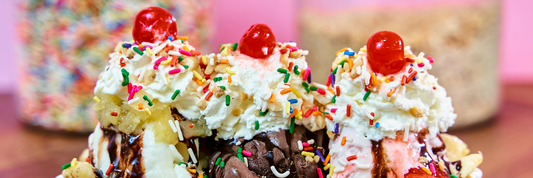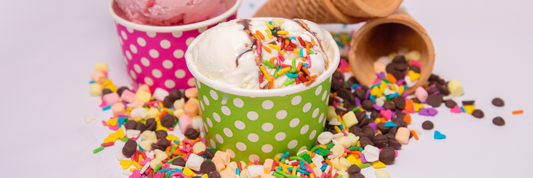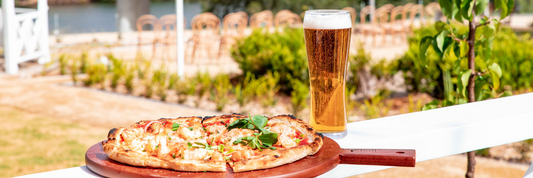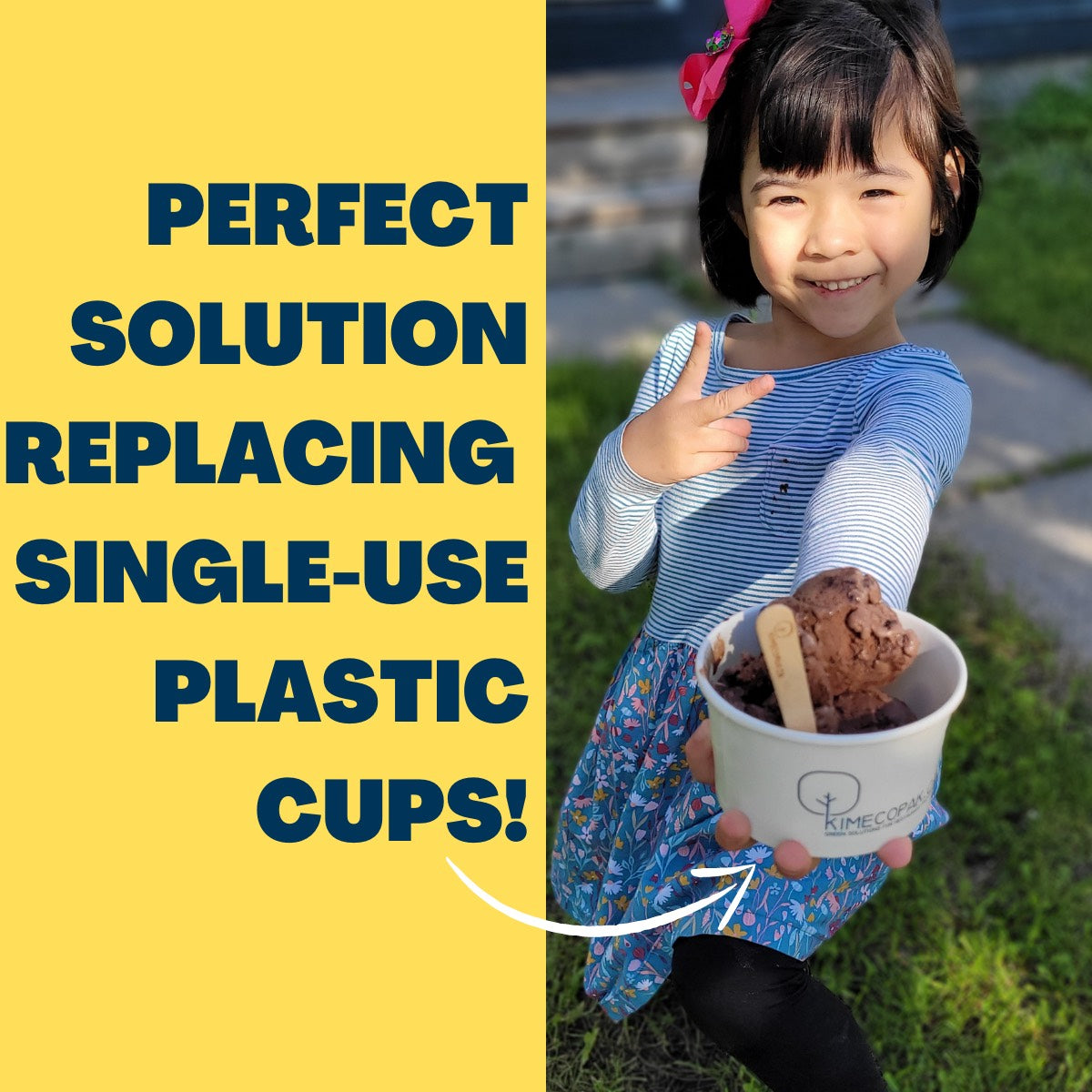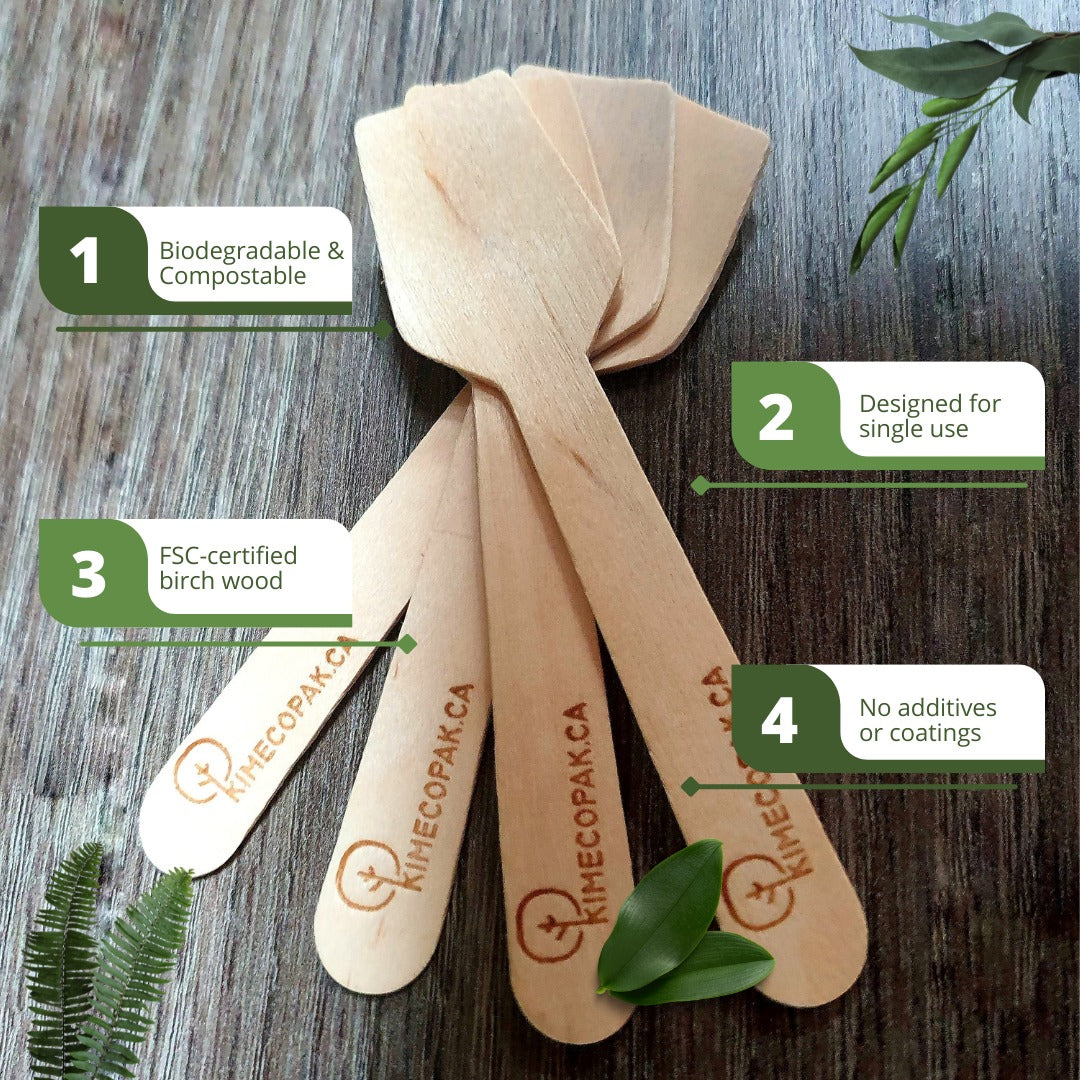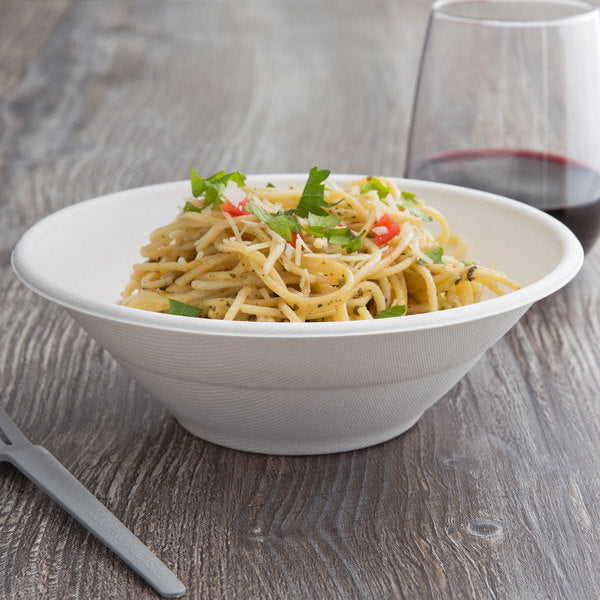What is a Pancake? Pancakes are a universal favorite, loved for their simplicity and versatility. Found in countless cultures, this thin, flat cake made from a simple batter is a culinary staple. Whether you enjoy them for breakfast, dessert, or as a savory dish, pancakes hold a special place in the hearts (and stomachs) of people worldwide. Let’s explore what makes pancakes so remarkable, their history, variations, and how you can enjoy them.
How Long Do Pancakes Last? A Complete Guide to Storing and Preserving Freshness
What is a Pancake?
Before we dive into delicious banana pancakes, let's understand the foundation. What makes a pancake, well, a pancake? It’s simpler than you might think, forming the base for countless variations enjoyed worldwide, including the fruity favorite we're exploring.
The Simple Definition
At its core, a pancake is a type of flat cake. People make it from a starch-based batter. This batter is typically thin enough to pour. Cooks then pour the batter onto a hot surface. This surface is usually a griddle or frying pan. The pancake cooks quickly, often getting flipped to cook both sides until golden brown. It's a fundamental breakfast food in many cultures, loved for its simplicity and versatility. Think of it like a very quick, flat bread or cake cooked right on the stovetop.
Key Ingredients That Make a Pancake
Most traditional pancake ingredients are pantry staples. You almost certainly have most of them right now! While recipes vary, the core components usually include:
- Flour: This provides the structure. All-purpose flour is common.
- Liquid: Milk, buttermilk, or even water hydrate the flour to form the batter.
- Eggs: These act as a binder and add richness.
- Leavening Agent: Baking powder or baking soda helps make the pancakes fluffy. This reaction creates bubbles in the batter when heated.
- Fat: Butter or oil adds flavor and tenderness and helps prevent sticking.
- Sugar & Salt: For flavor balance.
Pancake vs. Hotcake vs. Flapjack: Are They Different?
You've probably heard pancakes called different names. Are pancakes, hotcakes, and flapjacks the same thing? Mostly, yes, especially in the United States.
- Pancake: This is the most common and widely understood term for the griddle cake we've described.
- Hotcake: Often used interchangeably with pancake, sometimes implying a slightly thicker version. Imagine walking into a diner like IHOP – you might see both terms.
- Flapjack: In the US, this is another synonym for pancake. However, be aware: if you're talking to someone from the UK, a "flapjack" is quite different – it's a baked bar made with oats, similar to a granola bar!

A Quick Flip Through History
That simple pancake we enjoy, whether it's a classic stack or a modern banana pancake, has a surprisingly long and interesting past. It wasn't invented last Tuesday! Let's explore the origin of pancakes.
Ancient Origins: One of the Oldest Foods?
Believe it or not, pancakes might be one of the oldest breakfast foods humans made. Archaeologists have found evidence suggesting prehistoric people cooked simple flatbread-like mixtures. These early versions were likely basic combinations of ground grains (like flour from wild plants) and water.
People cooked this simple batter on hot stones. Think about Ötzi the Iceman, found preserved from over 5,000 years ago; analysis showed his last meal included ground grains cooked similarly. It shows this basic concept of a quick-cooked flat cake has been around for millennia.
Pancakes Through the Ages
Fast forward quite a bit. While early forms existed, the word "pancake" itself entered the English language around the 15th century. Before that, similar griddle cakes had different names. Ancient Greeks and Romans made versions often sweetened with honey. Throughout medieval Europe, cooks prepared various batter-based dishes using available flour, eggs, and milk.
These weren't always the fluffy stacks we picture; they varied greatly depending on available ingredients and cooking methods, evolving slowly towards the pancakes we recognize today.
Why Pancakes on Shrove Tuesday?
Many people know Shrove Tuesday as Pancake Day. Ever wonder why? It's a tradition tied to Lent, the Christian period of fasting before Easter. Historically, people needed to use up rich foods like eggs, milk, and butter before the fasting began. What's an easy recipe that uses all those pancake ingredients? Pancakes! It became a practical (and delicious) way to clear the pantry. This tradition continues today in many places, where families gather to flip and eat pancakes, connecting a modern meal to a very old custom.

The Science Behind the Stack
Ever wonder what makes pancakes fluffy or gives them that perfect golden-brown color? It’s not just luck; there's some simple science happening in that batter and on the griddle. Understanding this helps you achieve the best pancake recipe results, even when making variations like banana pancakes.
Getting the Perfect Texture: Batter Consistency Matters
The consistency of your pancake batter is crucial for the final texture.
- Too Thick: If your batter is like paste, the pancakes might be heavy and dense. They won't spread easily on the frying pan.
- Too Thin: A watery batter might spread too much, creating thin, crepe-like pancakes instead of thicker, fluffier ones. It might also absorb too much butter or oil.
Most recipes aim for a pourable batter that still has some body – thick enough to hold its shape slightly but thin enough to flow easily. Think of how honey flows slowly; a good pancake batter is often similar. Getting the liquid-to-flour ratio right, based on your chosen pancake ingredients, is the first step towards perfect texture. A few lumps are usually okay; overmixing can make pancakes tough.
The Magic of Leavening: Why Are Pancakes Fluffy?
That delightful airy, fluffy pancake texture comes from leavening agents. These are typically baking powder or baking soda included in the pancake ingredients.
Here’s how it works simply:
- When the leavening agent gets wet in the batter and then heats up on the griddle, it releases tiny bubbles of carbon dioxide gas.
- These gas bubbles get trapped within the cooking batter structure.
- As the pancake cooks and sets, these trapped bubbles create little air pockets.
Browning and Flavor: The Maillard Reaction at Work
That beautiful golden-brown surface and the delicious, slightly nutty flavor of a well-cooked pancake? You can thank a chemical process called the Maillard reaction. Don't worry about the complex name; the idea is simple.
When the sugars and amino acids (from the eggs and flour in your batter) heat up on the hot frying pan or griddle, they react. This reaction creates hundreds of new flavor and aroma compounds. It also causes the browning we associate with cooked foods – think toast, seared meat, or the crust of bread.
This reaction is essential for developing the characteristic taste and appearance of a great pancake, turning simple ingredients into comfort food.

Pancakes Around the World: A Global Phenomenon
While we might picture a specific stack often served for breakfast or brunch, the simple idea of cooking batter on a hot surface is truly universal. Nearly every culture has its own version, leading to many different types of pancakes around the world. This shows the incredible adaptability of this basic comfort food, paving the way for endless global cuisine variations, including adding things like bananas to classic recipes.
North American Classics: Buttermilk and Blueberry
In North America, the classic pancake is often thick, round, and fluffy. Buttermilk pancakes are a favorite, using tangy buttermilk in the batter for extra tenderness and flavor. Adding fruit, especially blueberries or sliced bananas, directly into the batter before cooking is very common. These are typically served stacked high, often with butter and drenched in maple syrup – a quintessential breakfast food image for many. You'll find versions like this everywhere from home kitchens to chains like IHOP.
European Cousins: Crêpes, Blinis, and Kaiserschmarrn
Europe offers many relatives to the American pancake.
- Crêpes: These famous French flatbreads are very thin pancakes made from a simple batter (usually flour, eggs, milk). They can be served sweet (with sugar, fruit syrup, or chocolate) or savory (with cheese, ham, or vegetables). Their thinness is what makes them different from thicker pancakes.
-
Blinis: Hailing from Eastern Europe, blinis are typically small, leavened pancakes often made with buckwheat flour. They are frequently served with savory toppings like sour cream or smoked salmon.
-
Kaiserschmarrn: This Austrian specialty is a fluffy, shredded pancake. The batter is poured into the pan, cooked, then torn into pieces and often caramelized with sugar, maybe served with fruit compote. It's like a deconstructed fluffy pancake.
Asian Variations: Okonomiyaki, Dorayaki, and Pajeon
Asia boasts incredible pancake diversity, often blurring the lines between sweet vs. savory dishes.
-
Okonomiyaki: This savory Japanese pancake is a fantastic example of global cuisine variations. Its name roughly means "grilled as you like it." The batter contains flour and eggs, but is loaded with ingredients like cabbage, meat, or seafood, then cooked on a griddle and topped with sauces and bonito flakes.
- Dorayaki: Another Japanese favorite, dorayaki consists of two small, sweet pancakes made from a castella-like batter, sandwiched around a filling, traditionally sweet red bean paste.
- Pajeon: This Korean savory pancake features a batter often made with flour, eggs, and water, filled with green onions (pa) and sometimes seafood or kimchi, then pan-fried until crispy.
Beyond Breakfast: Savory Pancakes from India (Dosa) to Ethiopia (Injera)
Many cultures embrace pancakes primarily as savory staples, often eaten throughout the day, not just for breakfast.
-
Dosa: A South Indian mainstay, the dosa is a thin, crispy crepe-like pancake made from a fermented batter of rice and lentils. It's naturally savory and often served with fillings like spiced potatoes (masala dosa) and chutneys.
-
Injera: This is a spongy, sourdough flatbread central to Ethiopian and Eritrean cuisine. Made from fermented teff flour batter, it has a unique texture and slightly sour taste, serving as both the plate and utensil for scooping up stews and salads.

How Are Pancakes Typically Served?
Pancakes, in their simplicity, offer a blank canvas for a wide array of culinary explorations. Their light and fluffy texture makes them a beloved dish enjoyed across the globe, often adapted to local tastes and preferences. Whether you're making an easy pancake recipe or a more elaborate one, the way you serve them can truly elevate the experience.
Sweet Toppings: Syrup, Fruit, Cream, and More
The most classic way to enjoy pancakes is with a generous drizzle of syrup. Maple syrup, with its rich and distinctive flavor, remains a perennial favorite. Beyond syrup, a vibrant array of fresh fruit adds natural sweetness and texture. Think sliced bananas, juicy blueberries, ripe strawberries, or even a medley of mixed berries. For an extra touch of indulgence, a dollop of whipped cream can transform your pancake stack into a delightful dessert.
Other popular sweet additions include powdered sugar, chocolate chips, various fruit syrups, honey, jams, and even a sprinkle of nuts for added crunch. Many enjoy the combination of butter melting into the warm pancakes, topped with their favorite sweet accompaniment.
Savory Options: Cheese, Meats, and Vegetables
While often associated with sweet flavors, pancakes can also be surprisingly delicious when paired with savory ingredients. In some cultures, pancakes are served as a base for cheese, such as melted cheddar or cream cheese. Cooked meats like bacon, sausage, or ham are also common savory additions, providing a satisfying contrast to the pancake's subtle sweetness.
For a lighter yet flavorful option, consider incorporating vegetables. Sautéed spinach, mushrooms, or even a fried egg on top can create a well-rounded and savory pancake meal. This showcases the versatility of what are pancakes made of, extending beyond the typical sweet breakfast fare.
The Perfect Pairing: What to Drink with Pancakes?
The beverage you choose to accompany your pancakes can significantly enhance your dining experience. For many, a hot cup of coffee or tea is the quintessential pairing, offering a comforting and familiar start to the day.
A glass of cold milk or a refreshing glass of orange juice are also popular choices, especially for a breakfast or brunch setting. Depending on the toppings and overall meal, other beverages like smoothies, fruit juices, or even a sparkling cider can complement the flavors beautifully. The perfect drink ultimately depends on personal preference and the specific way the pancakes are served.
Frequently Asked Questions (FAQ)
This section addresses common queries related to pancakes, offering quick and informative answers to enhance your understanding of this beloved breakfast food.
FAQ 1: What's the difference between a pancake and a waffle?
The primary difference between a pancake and a waffle lies in their cooking method and resulting texture. Pancakes are typically cooked on a flat griddle or in a frying pan, resulting in a relatively flat and soft texture.
Waffles, on the other hand, are cooked in a specialized waffle iron, which creates distinctive deep pockets and a crispy exterior with a light and airy interior. While both often share similar base batter ingredients like flour, eggs, and milk, the cooking process dictates their unique characteristics.
FAQ 2: Can I make pancakes without eggs or milk?
Yes, it is absolutely possible to make pancakes without eggs or milk. There are many excellent substitutes available. For egg-free pancakes, mashed ripe bananas (a common addition to banana pancakes!), applesauce, or flaxseed meal mixed with water can act as binding agents.
For dairy-free options, various plant-based milks like almond milk, soy milk, oat milk, or even buttermilk alternatives made with plant-based milk and lemon juice or vinegar work wonderfully. This allows individuals with dietary restrictions or preferences to still enjoy a delicious fluffy pancake recipe.
FAQ 3: How do I store leftover pancake batter or cooked pancakes?
Leftover pancake batter can be stored in an airtight container in the refrigerator for up to 2-3 days. Give it a gentle stir before using. Cooked pancakes can also be stored in an airtight container in the refrigerator for up to 3-4 days.
To reheat cooked pancakes, you can use a toaster, microwave, or a frying pan over medium heat until warmed through. For longer storage, cooked pancakes can be frozen in a single layer on a baking sheet and then transferred to a freezer-safe bag or container for up to 2-3 months. Reheat them directly from frozen in a toaster or oven.
FAQ 4: Are pancakes healthy?
The healthiness of pancakes largely depends on the pancake ingredients used and the toppings added. A basic pancake made with white flour, sugar, and minimal additions might not be considered the most nutritious option.
However, you can easily make healthier pancakes by using whole wheat flour, incorporating fruits like bananas or blueberries, and limiting added sugars. Choosing healthier toppings like fresh fruit, yogurt, or a drizzle of honey instead of excessive syrup and butter can also significantly improve their nutritional profile. Pancakes can be a part of a balanced diet when made with wholesome ingredients and enjoyed in moderation.
Conclusion
In conclusion, pancakes represent far more than just a simple breakfast food. Their inherent versatility allows them to adapt to countless culinary preferences, making them a globally cherished dish enjoyed at any time of day. From classic sweet renditions adorned with syrup and fruit to more adventurous savory options, pancakes offer a delightful canvas for creativity in the kitchen. We encourage you to explore the vast world of pancakes, perhaps starting with a delicious and easy pancake recipe for banana pancakes.
Whether you prefer them light and fluffy or slightly denser, there's a pancake out there for everyone. So grab your batter, heat up your griddle or frying pan, and discover the joy of making your own perfect stack.


